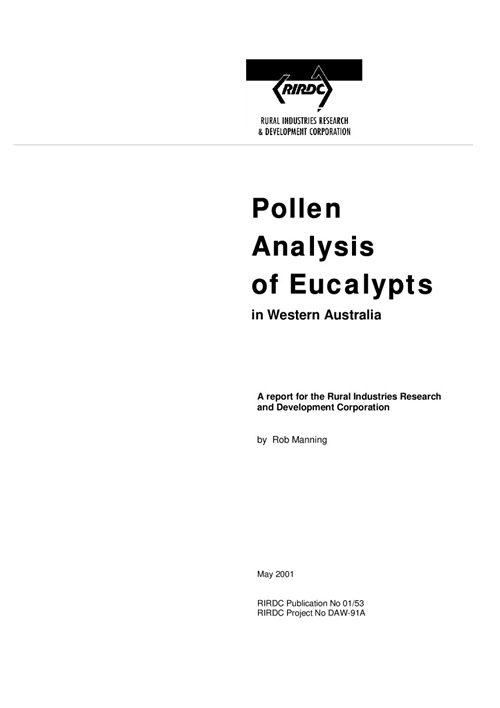Pollen is the primary source of protein, fats, vitamins and minerals in the diet of the
honey bee (Apis mellifera).
Newly emerged adults from the pupal stage of brood rearing must consume pollen
during the first 10 days after emergence. Without this pollen, the hypopharyngeal
glands that are responsible for producing food (worker jelly) for larval honey bees
remain underdeveloped and non-functional.
When honey bees are maintained on pollens that are marginal in nutritive value because
one or more amino acids are sub-optimal for honey bee longevity, brood rearing still
continues, but body weights decline. The life span of honey bee is also shortened and
the ability to feed young larvae can rapidly diminish, ultimately affecting the whole
function of the beehive.
The results of this study of the nutritive value of six Western Australian pollens
(Eucalyptus accedens, Eucalyptus diversicolor, Eucalyptus marginata, Eucalyptus
patens, Eucalyptus wandoo, and Corymbia (Eucalyptus) calophylla) will highlight to
beekeepers the necessary adoption of supplementary feeding of honey bees using
artificial feedstuffs or quality pollens. This will subsequently maximise the
performance of honey bees and as a consequence improve beekeeper incomes.
This report, a new addition to RIRDCs diverse range of almost 700 research
publications, forms part of our Honey bee R & D program which aims to improve the
productivity and profitability of the Australian beekeeping industry. The project
focuses on the program’s key strategy of improving hive husbandry and management
practises for increased profitability and touches on another key strategy of identifying
therapeutic values of specific floral species.





